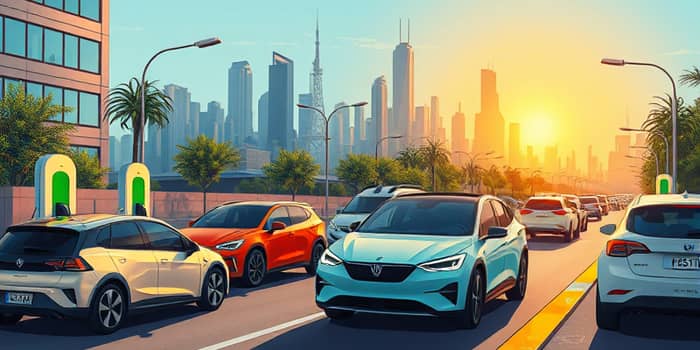
With each new model unveiling, the electric vehicle market surges forward, redefining mobility and inspiring change.
The surge in auto sales driven by fresh EV launches represents more than just a shift in numbers; it embodies a global movement toward transformative impact on transportation and a cleaner, more efficient future.
In recent years, the electric vehicle industry has become a powerhouse of innovation and growth. In 2024, global EV sales surpassed 17 million, and analysts anticipate sales to exceed 20 million by 2025.
This unprecedented growth and opportunity highlights how consumer preferences, policy incentives, and technological breakthroughs align to accelerate adoption.
The market’s expansion varies by region, each driven by unique factors:
Forecasts indicate the global EV market size will climb from USD 988.70 billion in 2025 to over USD 2,529.10 billion by 2034, with a CAGR of 11%. Such projections underpin the scale of opportunity awaiting investors, manufacturers, and policy makers alike.
Tesla remains a benchmark in the EV space, though fluctuations in its U.S. market share reveal evolving competition. Established automakers and nimble startups alike are vying for consumer attention with new models and enhanced features.
Leading brands and their standout releases in 2025 include:
Beyond these giants, emerging automakers are introducing compact crossovers and large-size electric trucks, answering demand for versatility and range.
Several core factors propel the rapid adoption of electric vehicles worldwide.
Consumer demand is at an all-time high, shaped by environmental concerns and the allure of lower operating costs. Drivers recognize that electric powertrains offer reduced maintenance expenses and cleaner urban air.
Technological breakthroughs in battery chemistry and energy density have largely quelled range anxiety. Vehicles now routinely surpass 300 miles per charge, thanks to cutting-edge battery and drivetrain technologies that continue to evolve.
Government policies play an equally pivotal role. From tax credits to direct subsidies, robust government incentives and policies have made EV ownership more accessible across demographics, while strict emission standards compel automakers to expand electric offerings.
Despite robust momentum, the industry faces hurdles that also present avenues for growth.
Addressing these challenges requires collaboration among government entities, private investors, and automakers. By pooling resources, stakeholders can accelerate infrastructure rollout and drive down component costs, yielding a more resilient ecosystem.
The United States has seen year-over-year growth in EV registrations, with Tesla’s presence remaining strong despite seasonal market fluctuations. Regional incentives in states like California and New York have spurred deeper penetration.
China leads the global arena, accounting for nearly half of all new vehicle sales in 2024. Government-led manufacturing initiatives and local brand momentum continue to expand domestic and export markets.
Europe’s EV market has been aided by emission regulations and urban low-emission zones, although the gradual withdrawal of subsidies in some nations has tempered growth. Nonetheless, automakers are responding with more affordable models and expanded charging networks.
To navigate this dynamic landscape, different stakeholders can adopt targeted strategies:
By focusing on practical steps and embracing innovation, participants across the value chain can harness the sector’s potential and contribute to a cleaner, more connected future.
The accelerating pace of auto sales on new EV launches signifies a pivotal chapter in transportation history. With every new model, the industry demonstrates its capacity for reinvention and renewal.
As consumers, businesses, and governments align toward common goals, we witness the dawn of a mobility revolution. Now is the time to ride this wave of change, embracing the promise of electric vehicles to deliver cleaner air, smarter cities, and rapidly expanding global demand for sustainable innovation.
Together, we can transform challenges into catalysts and drive toward a future where every journey is powered by progress.
References













